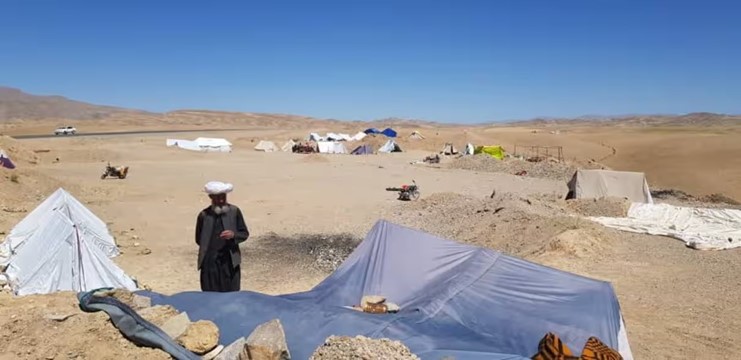
War, Deforestation, and Flooding: A Deepening Crisis in Afghanistan
On May 10, 2024, Haroon Nafas was with friends at his family's guesthouse in Baghlan, northern Afghanistan, when the peaceful afternoon was disrupted by a deafening crash. "At first, we thought it might have been a plane, but soon realized it was a flood," said Nafas. As he hurried to move his family to safety on a hillside, others sought refuge on rooftops, climbing trees to escape the raging waters. Unfortunately, not everyone survived the disaster.
The flash flood claimed the lives of at least 315 people in Baghlan and destroyed over 2,000 homes. Hundreds more were injured or missing, and the devastation extended across several provinces, including Ghor, where 50 additional fatalities were reported. This catastrophe was not an isolated event. Afghanistan has long been vulnerable to natural disasters, but the frequency and severity of these events have escalated, and the causes go beyond climate change. Decades of war have ravaged the environment, intensifying the impact of these disasters.
Dr. Najibullah Sadid, an environmental expert based in Germany, explains that the lasting effects of conflict have worsened the country's susceptibility to disasters. Toxic remnants of warfare, such as unexploded ordnance and mines, have damaged ecosystems and water supplies, while disrupting the soil's natural structure, making it more prone to erosion and flash floods.
Between 2001 and 2021, the U.S. military dropped over 85,000 bombs on Afghanistan, contaminating the land and reducing agricultural productivity. The infamous "Mother of All Bombs" left entire regions with toxins that spread through air and water, devastating crops and making recovery difficult. Meanwhile, Afghanistan's forests, which play a crucial role in preventing floods, have dwindled dramatically. Forest cover has dropped from 2.8 million hectares in 1970 to just 1.5 million by 2016, leaving areas like Nuristan particularly vulnerable.
Sadid notes the direct link between deforestation and the recent floods. Without trees to hold back rainwater, the land is increasingly exposed to landslides, contributing to extreme flash floods in parts of Afghanistan. The connection between war, deforestation, and flooding is clear, and the consequences are devastating.
Sayed Abdul Baset, a disaster risk reduction expert, highlights the pressing need for Afghanistan to improve its infrastructure and emergency response systems. "We lack basic things like flood zoning, proper water pipes, and early warning systems," he says. "Our homes are not safe, and our capacity to cope with these disasters is weak."
Local efforts, led by individuals like Sohila Akbari, are crucial to addressing the humanitarian crisis. Akbari, a Herat resident, has been leading relief efforts for over a decade. Her grassroots organization, Committee Akbari, provides vital emergency aid such as food, clothing, and tents to the city's most vulnerable. After surviving a deadly earthquake in Herat in 2023, she resumed her efforts to help those in need, saying, "What little we can do, we will do it."
The international community faces a significant challenge in getting aid to places like Afghanistan, especially after the Taliban's takeover in 2021. The exclusion of Afghanistan from global discussions, like the recent Cop28 climate talks, has further marginalized the country. Despite Afghanistan's minimal contributions to global emissions, the country faces severe consequences due to global climate change, making the need for international cooperation urgent.
Rahmani, another expert, believes that international support and investment in climate education for Afghanistan's youth could be the key to long-term resilience. "With a small budget, we can provide employment, education, and training in the climate field to young Afghans, who make up 60% of the population," he says. However, changing attitudes toward climate disasters is essential. Many in Afghanistan still see these events as acts of divine punishment, rather than human-induced crises that can be mitigated.
As the global community grapples with how to fund climate resilience in places like Afghanistan, the United Nations Development Programme's loss and damage fund offers a potential solution. Designed to help vulnerable nations recover from climate-induced disasters, this fund could provide crucial financial support to a country in desperate need of assistance.
For people like Nafas in Baghlan, immediate concerns remain dire. The flood has left many without clean water or basic supplies, and the upcoming winter threatens to worsen the situation. "We are living in chaos," says Nafas. "The cold season is approaching, and there's no drinking water, no income, no shelter."
As Afghanistan continues to navigate the complex intersection of war, environmental destruction, and natural disasters, the global community's response will be crucial in shaping the country's future.